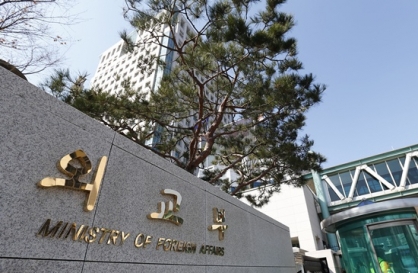North Korea’s long-range missile capabilities appear to have advanced
By Korea HeraldPublished : Feb. 7, 2016 - 15:12
Eyes are now on the missile capabilities of North Korea after it has launched its sixth long-range rocket and successfully placed it in orbit on Sunday.
While North Korea has notified the international organizations including the International Maritime Organization that it was a launch of an earth observation satellite, South Korea, the U.S. and Japan deem it to be a cover up for its testing of Inter-Continental Ballistic Missile.
While North Korea has notified the international organizations including the International Maritime Organization that it was a launch of an earth observation satellite, South Korea, the U.S. and Japan deem it to be a cover up for its testing of Inter-Continental Ballistic Missile.

The South Korean military authorities confirmed that the satellite loaded onto a long-range rocket successfully entered into orbit, as did its last launch of Unha-3 in December 2012.
North Korea also confirmed and praised that its Gwangmyeongseong-4 successfully entered into orbit through its special announcement made several hours after the launch in Dongchang-ri.
For the North to make a viable missile, it needs to miniaturize nuclear warheads and develop technology enabling the rocket to re-enter the atmosphere.
The range of long-range rocket launched by North Korea could reach at least 10,000 kilometers and up to 13,000 kilometers, which could mean North Korea has the capability to hit the U.S. mainland if it also acquires the technology to reenter the atmosphere.
South Korean officials reportedly deem that the Gwangmyeongseong-4 may have advanced from 2012’s Unha-3.
They cite, among others, the higher launcher pad from 50 meters in 2012 to more than 60 meters, which could indicate better propulsion.
The Unha-3 rocket was considered to have the maximum range of around 10,000km, long enough to reach the western part of the continental U.S., compared to the latest missile’s maximum 13,000km, that is far enough to reach the eastern part of the U.S. in theory.
Observers also noted that North Korea is also believed to have placed a 500kg payload inside the nozzle of the latest rocket, compared to around 100kg payload back in 2012. This is efficient enough to carry a nuclear warhead.
It, however, remains unknown whether North Korea has also attained the technology to have the warhead to make atmospheric reentry, which would be crucial to make an attack.
In order for the warhead to freefall to an intended target, it drops at the maximum speed of Mach 20, creating tremendous shock and temperatures of between 6,000 to 7,000 degrees Celsius. It is therefore necessary to design and use materials for the warhead to withstand the heat and pressure.
(khnews@heraldcorp.com)
-
Articles by Korea Herald




![[Weekender] Korean psyche untangled: Musok](http://res.heraldm.com/phpwas/restmb_idxmake.php?idx=644&simg=/content/image/2024/05/02/20240502050841_0.jpg&u=)

![[Eye Interview] 'If you live to 100, you might as well be happy,' says 88-year-old bestselling essayist](http://res.heraldm.com/phpwas/restmb_idxmake.php?idx=644&simg=/content/image/2024/05/03/20240503050674_0.jpg&u=)











![[Herald Interview] Director of 'Goodbye Earth' aimed to ask how we would face apocalypse](http://res.heraldm.com/phpwas/restmb_idxmake.php?idx=652&simg=/content/image/2024/05/03/20240503050732_0.jpg&u=)
